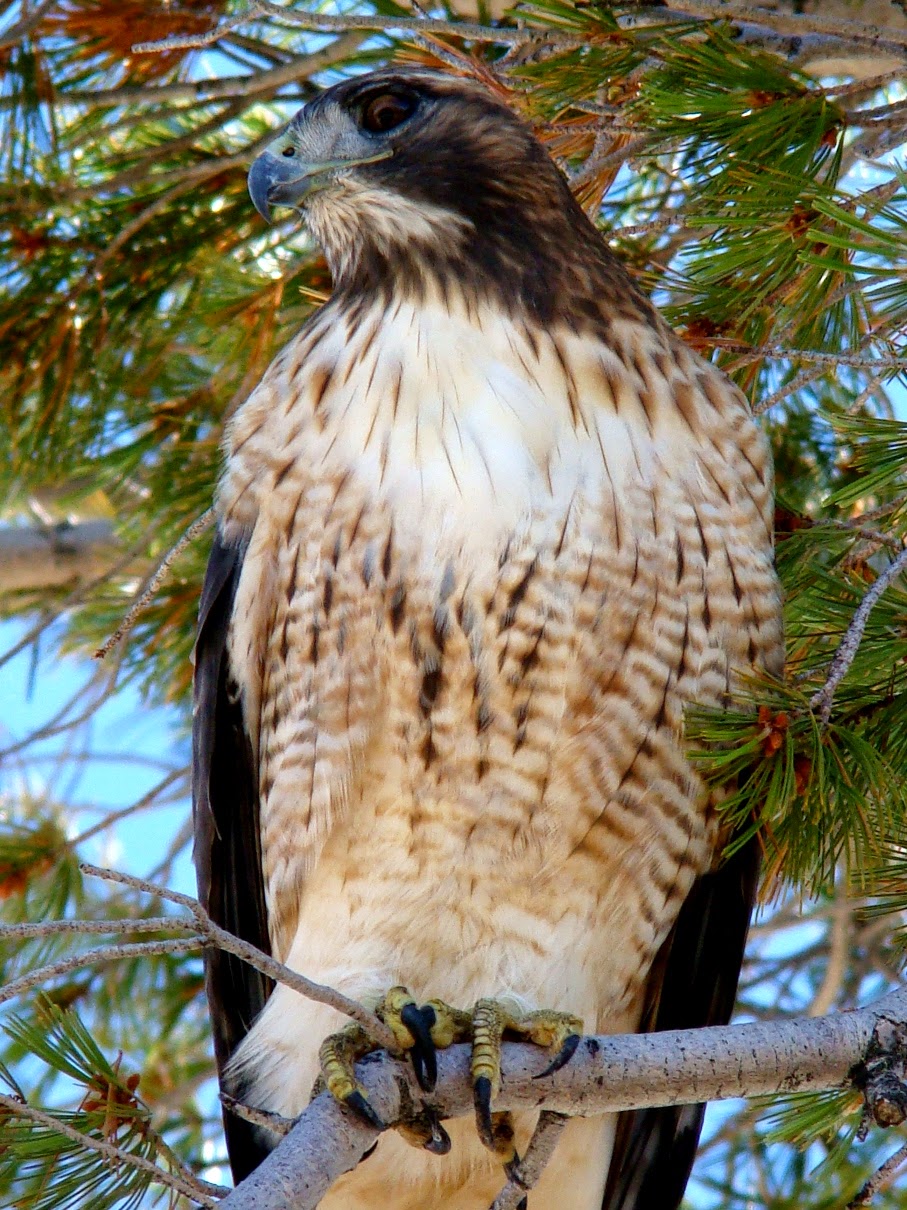The birds themselves are spectacular to watch, if they are out and about. They have a huge wingspan, and are graceful flyers.
Activity at the nests is pretty muted, as we have yet to see any chicks. They may very well be there, but the nests are huge and deep. They are used year after year, and each year brings new sticks and other nest materials. The largest nests can be thirteen feet deep and six or seven feet wide. They have been encouraged to use artificial poles and platforms in our region.
There is a nest at the south end of Roberts Ferry Bridge on the Tuolumne River east of Waterford.
There is another nest on an old telephone pole almost hidden in the trees just south of the Merced River near McSwain Dam. One of the biggest nests is on a pole at the junction of Merced Falls Road and Hornitos Road at Merced Falls (below).
The nearest nest to us is on Lake Road just east of Turlock Lake State Recreation Area. The Ospreys there have both the reservoir and the Tuolumne River to utilize as a source of fish.
Under the category of "what did they ever do before telephone poles?", here is an Osprey nest in the top of a conifer tree near Table Mountain and Jamestown that I saw on a hike last week.
We'll keep an eye out for young Ospreys and let you know when we get some pictures!

















































